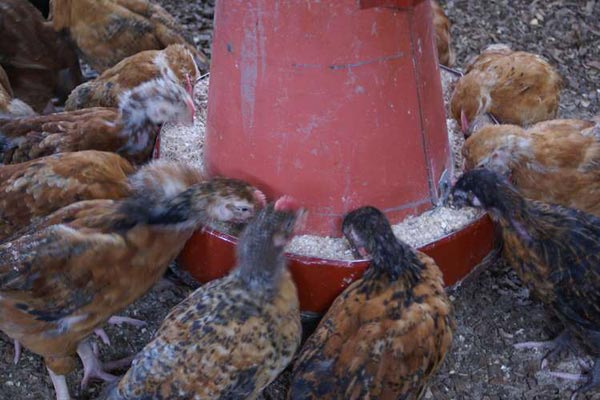To begin with, the choice between maize germ and whole maize as the primary source of carbohydrates, or between soya meal and fishmeal as the primary source of proteins raises practicalities regarding cost and safety.
A kilogramme of maize germ retails between Sh15 and Sh35 depending on where and when you buy it, while a kilo of whole maize retails at Sh50. This means that using whole maize instead of maize germ increases costs three to eight times.
On my poultry farm, I use maize germ (without whole maize), wheat bran, sunflower and fishmeal (omena) as the source of carbs and proteins.
The reason is that the nutrients that could have been contributed by whole maize, but were not found in maize germ (if any), are contributed by either wheat bran, or sunflower or even fishmeal.
In fact, maize germ (14 per cent Crude Protein – CP) is more nutritious than whole grain maize (9 per cent CP) and one doesn’t need to include both ingredients.
Besides whole maize grain is more expensive than maize germ. As a general nutrition principle, there is added value in combining raw materials from varied sources (better balance in diet), but this increases cost unnecessarily.
Second, the choice of soy meal as a source of protein, (or to replace fishmeal) raises safety concerns if necessary precautions are ignored. Granted, soybean has one of the highest sources of proteins. I have even used it for making dairy feeds, but only after baking it. However, buying already baked grain from unreliable suppliers who don’t pre-treat can be fatal.
The reason is that soybean has a chemical called anti-trypsin which requires to be inactivated by baking using heat of about 180 degrees centigrade, especially if it is to be used in poultry feeds.
I once had to withdraw and discard poultry feeds worth Sh40,000 that I had used soy bean as the ingredient. Unfortunately, most suppliers of soybean by-product for chickens don’t even comprehend this concept. As a precaution, always pre-test your feeds on a few birds before feeding the rest of the stock.
Third, apart from CP (the basic nutritional formula for making animal feeds discussed in last week’s article), it is important to consider the bioavailability of the feeds. Just because the CP value is correct, say 23 per cent, does not mean that all of it will be digested and absorbed (bio-available).
I once purchased cheap blood meal hoping that its high CP (>80 per cent) added value. However, because of the high crude protein, the birds (broilers) could not digest it.
Fourth, it is important to subject homemade feeds to laboratory testing for quality assurance. However, from experience, the best test for animal feeds is to buy the raw materials from credible sources, mix in the right proportions and test empirically by isolating a few birds, feeding them and observing their performance.
The testing undertaken in many laboratories, called Proximate Analysis, simply determines the crude fibre, crude protein, ash (minerals) and metabolisable energy of feeds, but does not indicate the amino acid (building blocks of proteins), mineral and vitamin content.
Fifth, I found the author was too generous on micro-nutrients and amino acids like zinc bacitracin, mycotoxin binder and tryptophan (an aromatic amino acid).
These can be quite expensive. A kilo of lysine and methionine (amino acids) retail for Sh1,000 and Sh1,200 respectively. I advise that you download the amino acid profile of your poultry and determine if tryptophan is deficient before adding (kienyeji chickens may not need all these additives). The most critical additional nutrients for poultry is lysine and methionine.
Most grains – maize, sorghum, wheat and rice- are deficient in lysine and methionine, which are essential.
Lastly, whereas there are safety reasons associated with feeds kept longer than a month (after grain is milled, some nutrients like Vitamin A degenerate very first), thus, one may need feed stabilisers to keep them fresh for a little longer.








